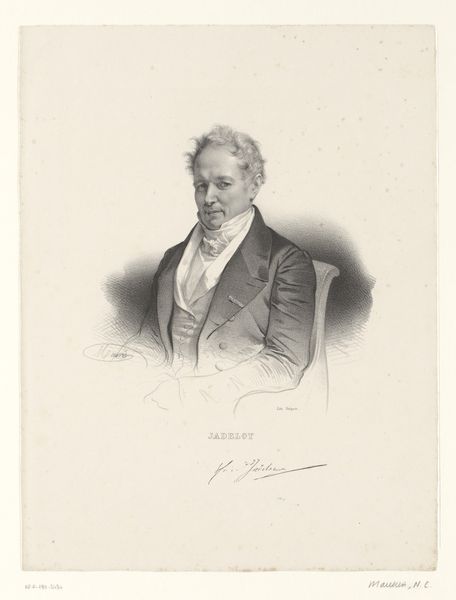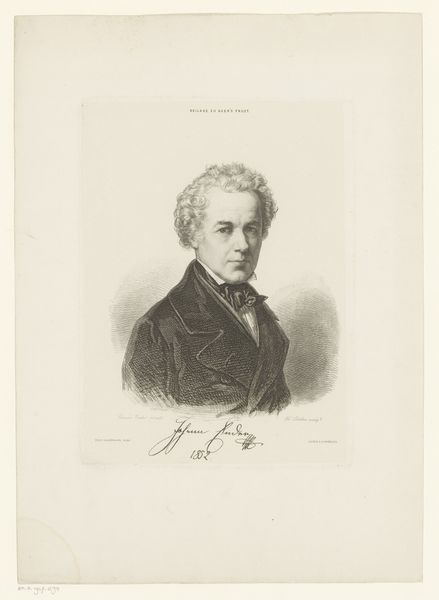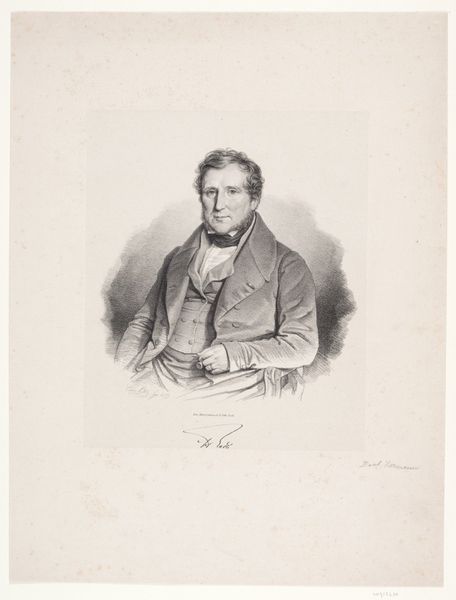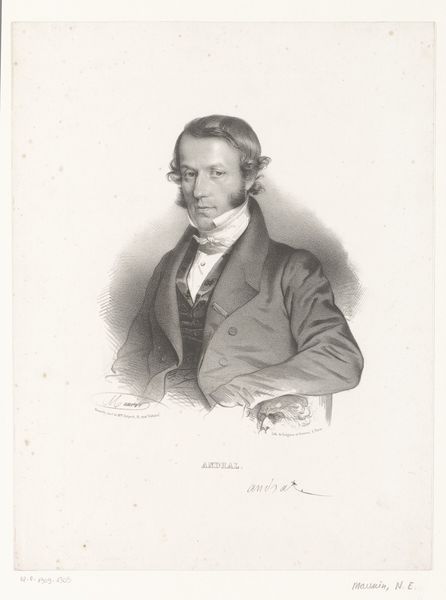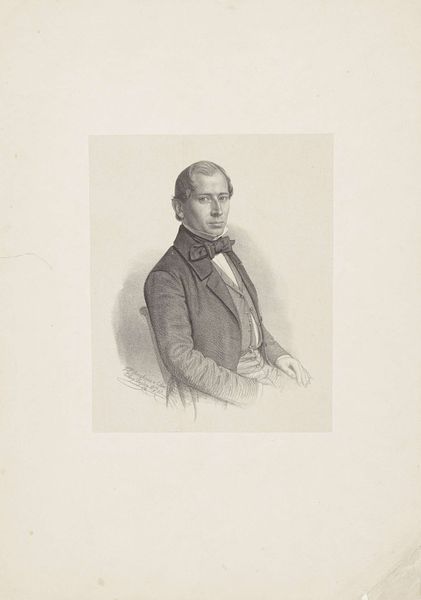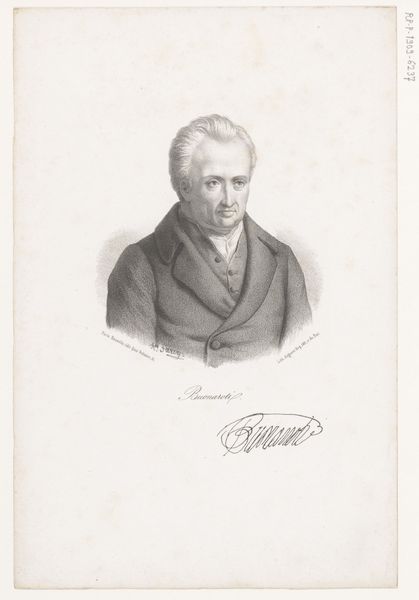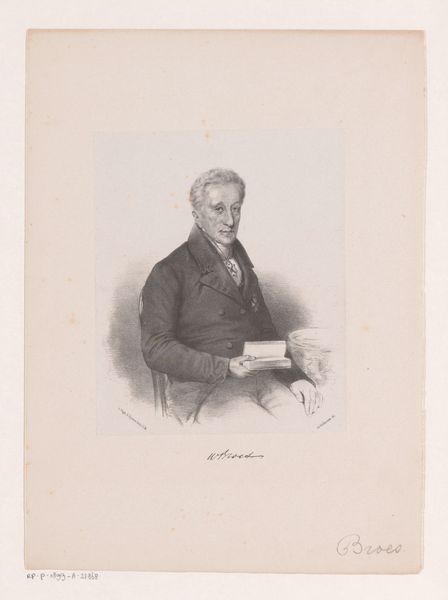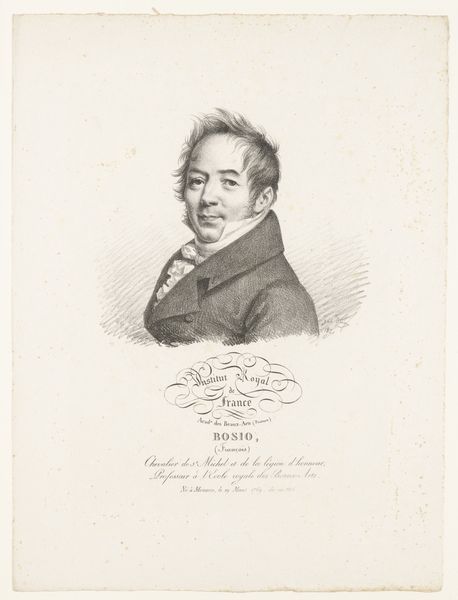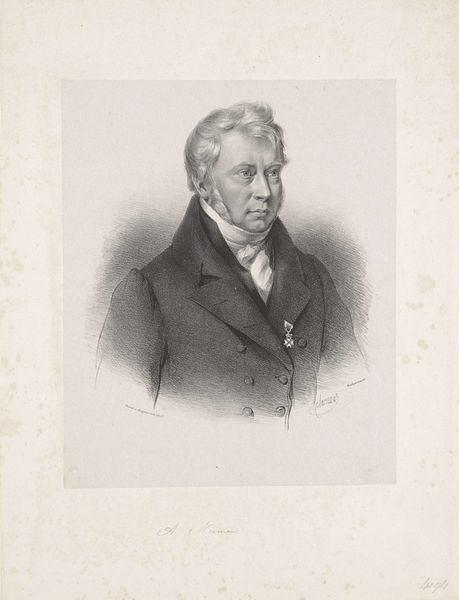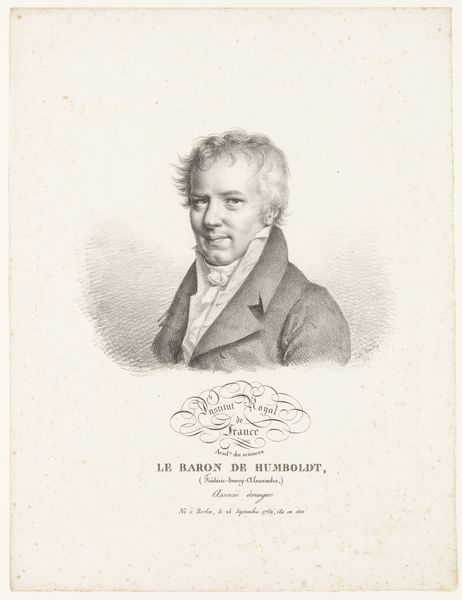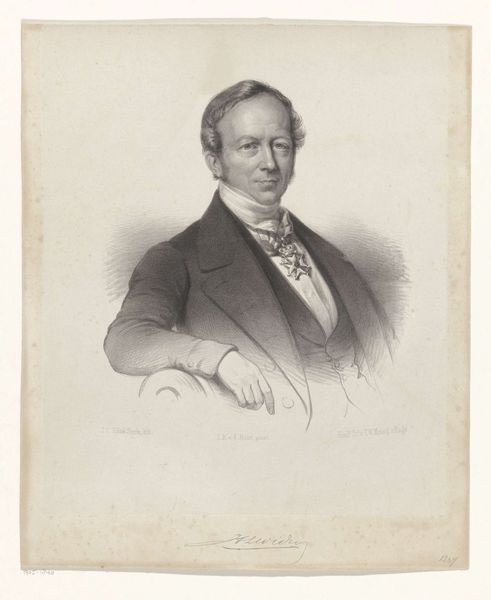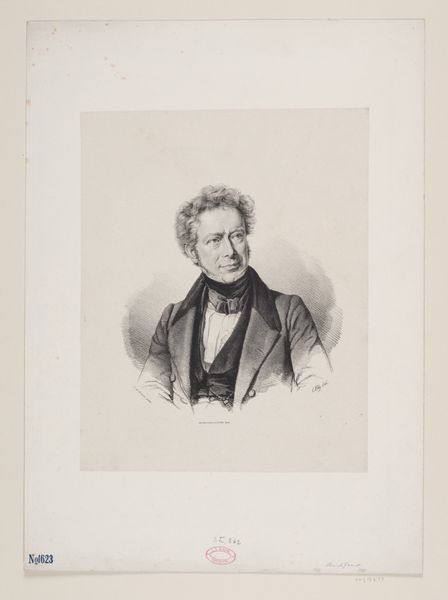
drawing, pencil, engraving
#
portrait
#
pencil drawn
#
drawing
#
neoclacissism
#
pencil sketch
#
old engraving style
#
pencil drawing
#
pencil
#
19th century
#
history-painting
#
engraving
#
realism
Dimensions: height 481 mm, width 317 mm
Copyright: Rijks Museum: Open Domain
Charles Louis Bazin made this portrait of Alexander von Humboldt in 1837. It's an engraving, a printmaking technique involving carving a design into a metal plate, inking it, and pressing it onto paper. The linear quality of the image, created by the fine lines etched into the metal, gives it a precise, almost scientific feel. The density of these lines creates tone and shadow, defining Humboldt's features and clothing with remarkable detail. Look closely, and you can see how the varying pressure of the engraver's tool has created a sense of depth and texture, bringing the portrait to life. Engraving was a highly skilled and laborious process, demanding precision and patience. In the 19th century, engravings like this one were a key means of disseminating images and information, playing a crucial role in shaping public opinion and knowledge. This portrait speaks to the value placed on scientific achievement, but also on the skilled labor involved in its creation.
Comments
No comments
Be the first to comment and join the conversation on the ultimate creative platform.
